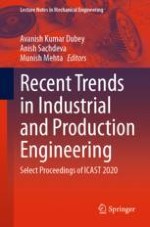This book presents the select proceedings of the International Conference on Advances in Sustainable Technologies (ICAST 2020), organized by Lovely Professional University, Punjab, India. This book caters to the industrial and production engineering aspects. It covers the industrial and production engineering areas such as sustainable manufacturing systems, decision sciences, supply chain management, Just in Time (JIT), logistics and supply chain management, rapid prototyping and reverse engineering, quality control and reliability, six sigma, smart manufacturing, time and motion study, six sigma, ergonomics, operations management, manufacturing management, metrology, manufacturing process optimization, machining and machine tools, casting, welding, and forming. This book will be useful for industry professionals and researchers working in the area of mechanical engineering, especially industrial and production engineering.
